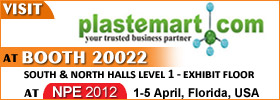
ARTICLES
Intense and rising focus to protect patients from harm, particularly from hospital acquired infections (HAIs), has exerted pressures on healthcare device makers to enhance their products with antimicrobial properties and other safety and hygiene attributes. Several technologies and materials are being offered to enable healthcare products and services, medical device OEMs address existing safety concerns or proactively add value to differentiate their products in the marketplace. Read about materials that also contribute to other important aspects of patient and clinician safety, from X-ray shielding to static dissipation in the presence of oxygen, meet regulatory compliance, can withstand steam sterilization without significant loss of properties. Read in Material developments enhance medical products with antimicrobial properties, other safety attributes
As efforts to render cars and trains more economical gather pace, manufacturers are trying to replace currently used materials with newer lighter materials. However, lighter materials are generally not as tough as steel or aluminum. This leads manufacturers to decide which components can really afford to have weight shaved off and how to integrate them into the overall systems. A glass reinforced polyurethane sandwich material for use in reducing weight of train components has been developed. It is suitable for a variety of applications, not least diesel engine housings on trains – and it makes these components over 35% lighter than their steel and aluminum counterparts. Read more in Lightweight vehicles with Polyurethane composites
Several developments have been witnessed over the past decade in materials for use in food contact packaging. The legislation referred to is the European Directive 2002/72/EC of August 2002 relating to materials and articles made of plastics intended to come into contact with food. Over the years, this Directive has been amended and revised several times to adapt to technological advances in the field. Following several amendments and massive developments, the European Commission has decided to establish a new regulation to replace, in part initially and then completely. Read more Guideline to the new EU food contact regulation
An innovative end use of high density polyethylene (HDPE) pipes is that of use as homes for rural population which could increase the per capita consumption of plastics from a single digit to a triple digit. To find out the process of construction, application, cost and potential in India, read Innovative end use of High Density Polyethylene pipes (1 mtr OD) as homes for rural population
Despite witnessing a temporary deceleration in growth in the years 2008 and 2009, growth in the global materbatch market will primarily be driven by resurgence of demand fundamentals, such as improving income levels, strengthening consumer confidence, growing propensity to spend, continued shift towards packaged products, and increase in the demand for consumer goods, automotives, and electronic appliances among others. To know about the growing applications, the growth regions and end use sectors, read Global masterbatch market to reach US$8.5 bln by 2017
The masterbatch industry in Europe is more mature, and has seen a dramatic alignment after the 2008-2009 financial crisis. Post 2008 crisis, the situation has calmed in Europe. Although the medium-term prospects for Europe’s masterbatch industry are not very exciting, the market is expected to grow at a modest 2% pa in the near future. To know about the overall market scenario, the new trends, consolidation in the industry, etc, read European masterbatch consumption to rise from 900,000 tons to about 1 mln tons by 2015
Despite the impact of the global recession, demand for masterbatch products has continued to power ahead in Asia and is forecast to continue growing by over 7% pa. Asia is the fastest growing and most dynamic market for thermoplastic types of masterbatches. The most significant driver of this demand is the continuing expansion and rapid development of the market in China. Other countries in the region have also contributed to this growth. To know about the application sectors, market trends and demand drivers, leading growth regions and the leading players in these regions, factors affecting growth, etc, read Asia is world’s fastest growing, most dynamic market for thermoplastic masterbatches



















